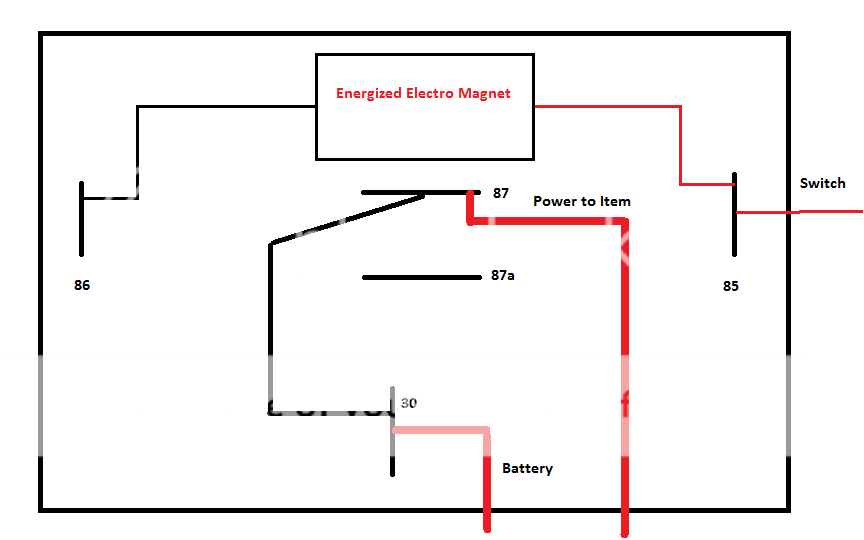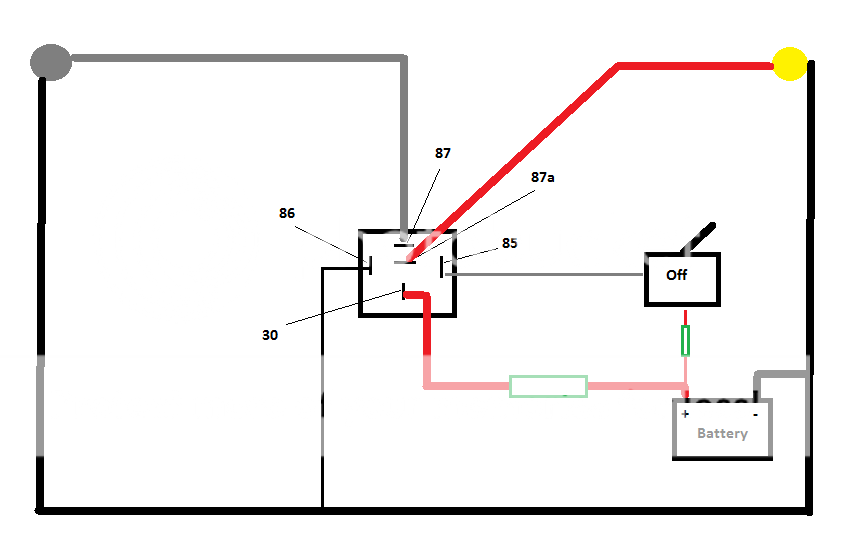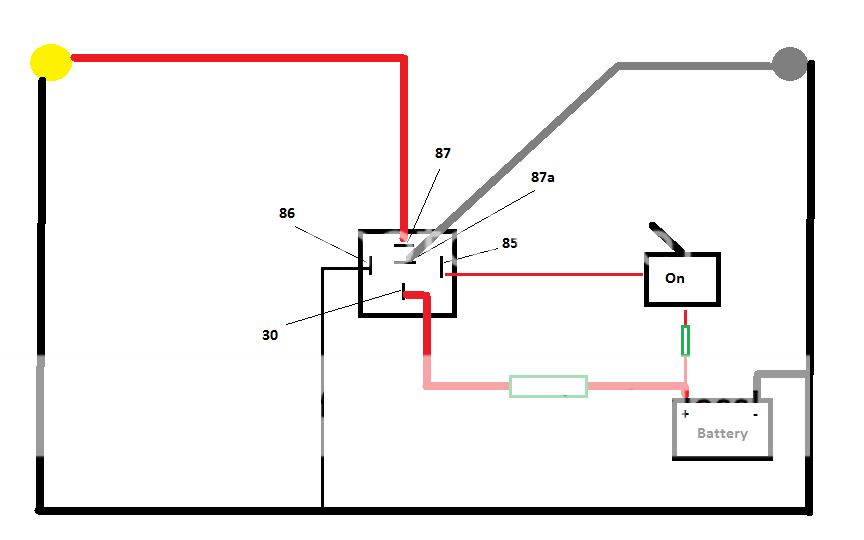93xjcowboy
NAXJA Forum User
- Location
- Savannah, GA
I am starting this thread because I have yet to see a good electrical thread that explains the dirty basics. Now that I am in school and learning this I would like to share the knowledge with fellow Jeepers. This is not a thread for complex theories and unnecessary ideas, Its to help the basic Jeeper understand why to wire his electric fan or fog lights in a certain way and why it works.
The book definition of electricity is the flow of electrons from atom to atom in a conductor. Electricity revolves around 3 basic things: Voltage, Current (Amps), and Resistance (Ohms)
Voltage is the Difference in charge at each end of the circuit. In other words its the pressure or push applied to the electrons. Measured in Volts.
Current is the movement of the electrons in the circuit. Current will Always find the path of least resistance. Measured in Amps
Resistance is the opposition of current flow. Basically its the friction in the circuit slowing down the electrons.
You can have Voltage w/o Current but you cannot have Current w/o Voltage. If you are still having trouble with how that works you can compare electricity to a garden hose. The water flowing through the hose is the Current while the pressure making the water move is the Voltage. If you put your thumb over the end then you have created a high Resistance and the current has been reduced.
There is a simple law that you should understand, Ohms Law. Ohms law states The Amperage (Current) in a circuit is directly proportional to the applied voltage and inversely proportional to the resistance. Simple right Here it is in plain easy to understand form:
Here it is in plain easy to understand form:
-If the voltage goes up, the amperage will go up.
-If the voltage goes down, the amperage will go down.
-If the resistance goes up, the amperage will go down.
-If the resistance goes down, the amperage will go up.
Hopefully you understand things so far because there is more coming. I am going to try and make things as simple as possible and build slowly so it becomes as simple as possible to understand. For most of this I am going to use a light bulb as the load for simplicity.
Circuits consist of your power, wires (Red is Power, Black is Ground), load , and ground. With Jeeps your battery + is your power and your battery - is your ground. Say you were wiring your reverse lights up you wouldnt want to run a ground wire all the way back to the battery, This is why there is a ground strap from your battery to your body/engine block. Because of this you can hook up your ground to any bare metal on the body. Here you can see an extremely simple circuit.

In the next 2 pictures I have added a switch and a fuse and shown what the switch does.

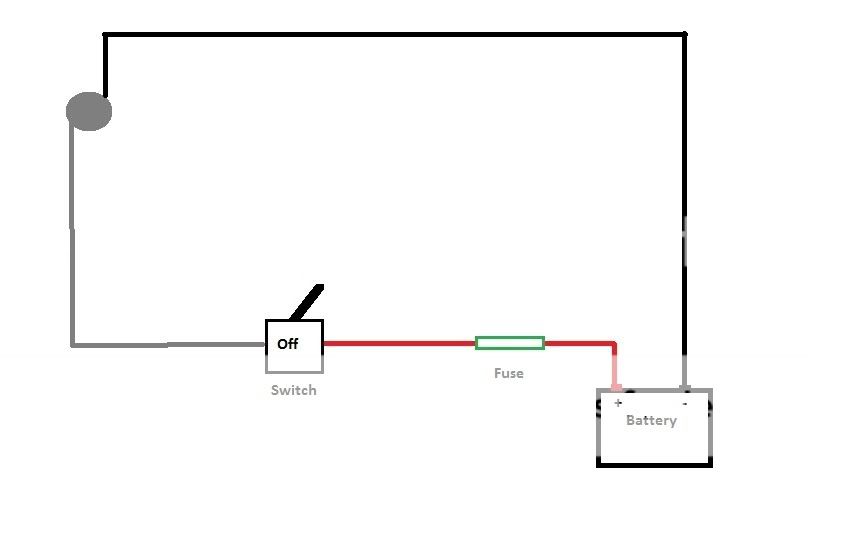
A Fuse is installed in your circuit as a safety against over powering an item which can cause damage and/or fire. It is a thin piece of metal that will melt (pop) at a certain temperature (The more electrons you try and shove through an area the hotter it will get). Most of the time what will cause the fuse to blow is a short in the circuit. A Short is any path that the electricity can take that leads it away from the desired location, One example would be a bare wire rubbing against bare metal. A short can exist in a system and still power your device, It will act as a drain on the battery if you have an improper or lack of a fuse. You can see in the picture how a short can divert power away from your device yet still have enough for it to be powered.
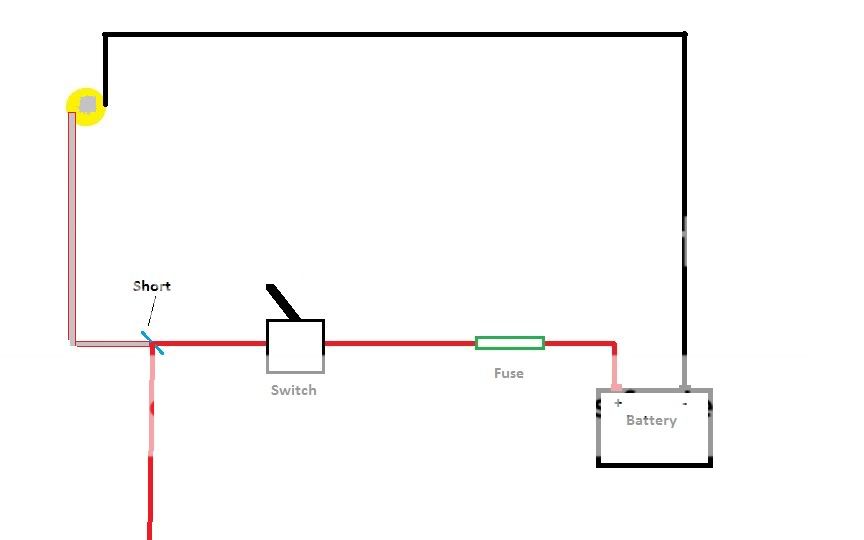
The closer to the power source you mount the fuse the better as it can protect more of your circuit and help keep your battery from draining. In the next picture you can see a fuse that has blown.
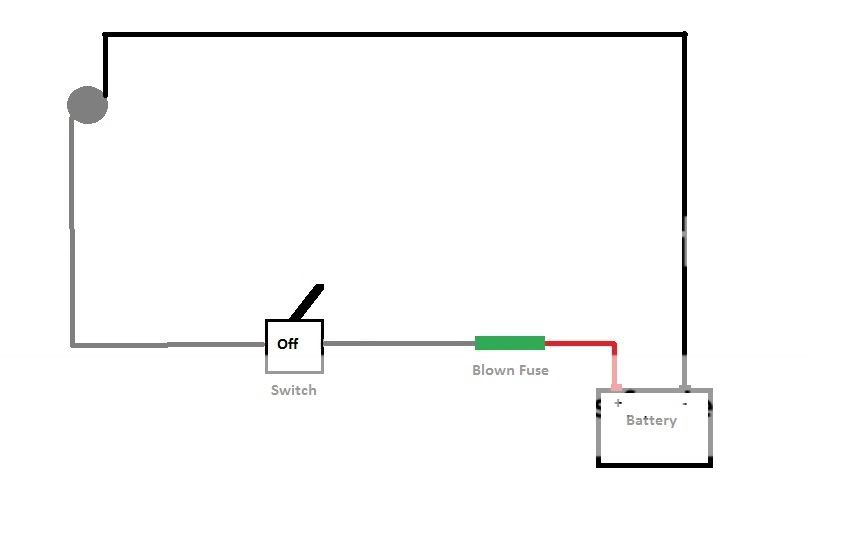
There are 3 basic types of Circuits: Series, Parallel, and Series-Parallel.
Series is a circuit in which the power only has one path to travel. Say you have 5 switches in a circuit, If you turn one off then power to the entire circuit following the switch is cut off.
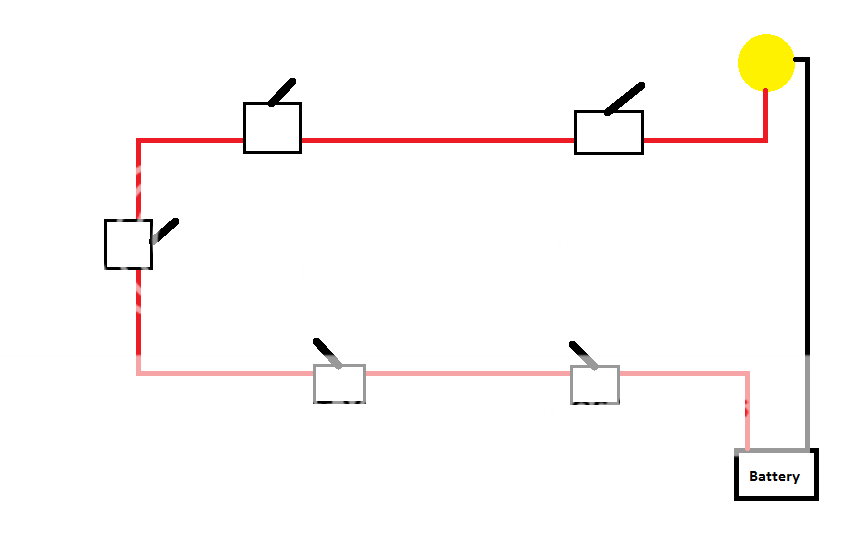
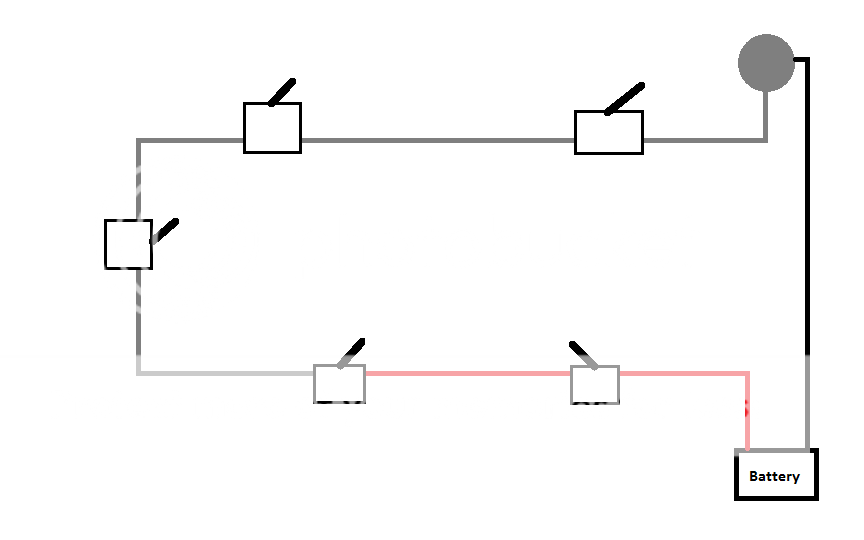
Parallel is a circuit in which there are multiple paths for the power to travel. If you have 3 switches in a parallel circuit they do not effect each other if turned off or on. This would be good for an electric fan if you were to use a manual switch and a thermostat switch.
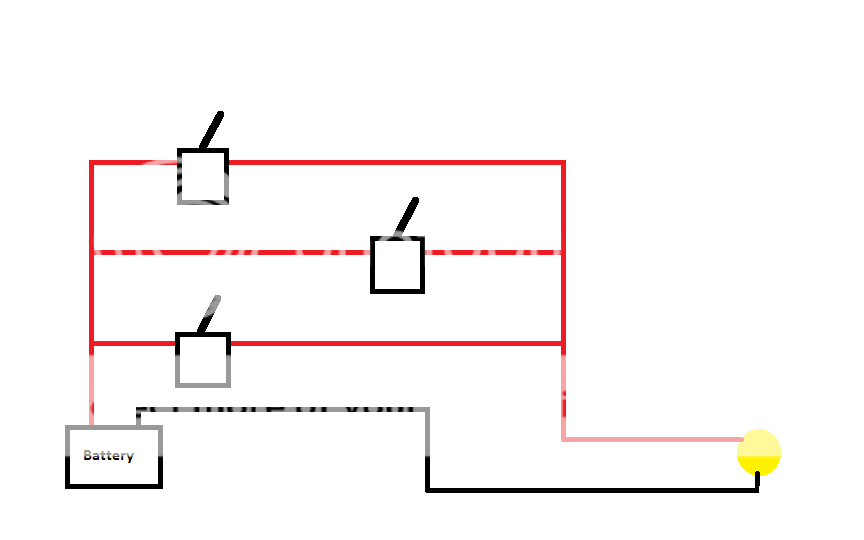
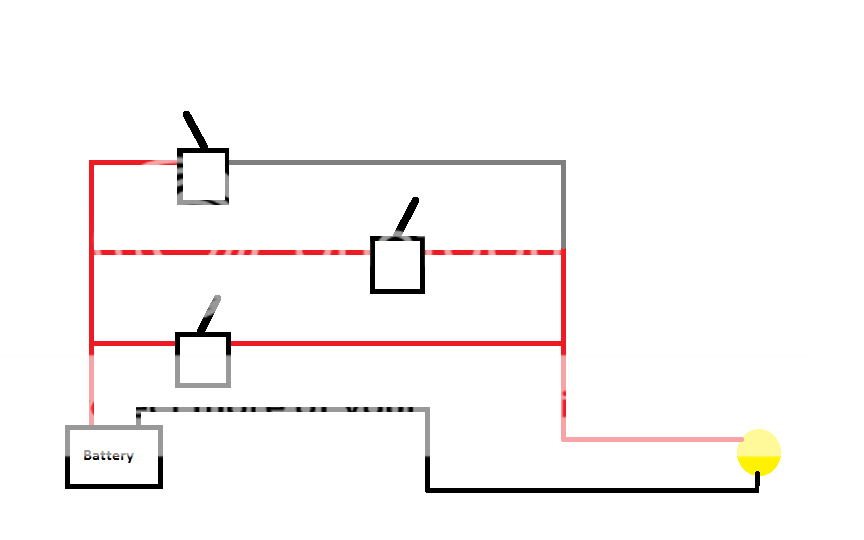
A Series-Parallel circuit is just a combo of both. You can have a few switches wired in parallel and have a single switch wired in series that shuts them all off.
The book definition of electricity is the flow of electrons from atom to atom in a conductor. Electricity revolves around 3 basic things: Voltage, Current (Amps), and Resistance (Ohms)
Voltage is the Difference in charge at each end of the circuit. In other words its the pressure or push applied to the electrons. Measured in Volts.
Current is the movement of the electrons in the circuit. Current will Always find the path of least resistance. Measured in Amps
Resistance is the opposition of current flow. Basically its the friction in the circuit slowing down the electrons.
You can have Voltage w/o Current but you cannot have Current w/o Voltage. If you are still having trouble with how that works you can compare electricity to a garden hose. The water flowing through the hose is the Current while the pressure making the water move is the Voltage. If you put your thumb over the end then you have created a high Resistance and the current has been reduced.
There is a simple law that you should understand, Ohms Law. Ohms law states The Amperage (Current) in a circuit is directly proportional to the applied voltage and inversely proportional to the resistance. Simple right
-If the voltage goes up, the amperage will go up.
-If the voltage goes down, the amperage will go down.
-If the resistance goes up, the amperage will go down.
-If the resistance goes down, the amperage will go up.
Hopefully you understand things so far because there is more coming. I am going to try and make things as simple as possible and build slowly so it becomes as simple as possible to understand. For most of this I am going to use a light bulb as the load for simplicity.
Circuits consist of your power, wires (Red is Power, Black is Ground), load , and ground. With Jeeps your battery + is your power and your battery - is your ground. Say you were wiring your reverse lights up you wouldnt want to run a ground wire all the way back to the battery, This is why there is a ground strap from your battery to your body/engine block. Because of this you can hook up your ground to any bare metal on the body. Here you can see an extremely simple circuit.

In the next 2 pictures I have added a switch and a fuse and shown what the switch does.


A Fuse is installed in your circuit as a safety against over powering an item which can cause damage and/or fire. It is a thin piece of metal that will melt (pop) at a certain temperature (The more electrons you try and shove through an area the hotter it will get). Most of the time what will cause the fuse to blow is a short in the circuit. A Short is any path that the electricity can take that leads it away from the desired location, One example would be a bare wire rubbing against bare metal. A short can exist in a system and still power your device, It will act as a drain on the battery if you have an improper or lack of a fuse. You can see in the picture how a short can divert power away from your device yet still have enough for it to be powered.

The closer to the power source you mount the fuse the better as it can protect more of your circuit and help keep your battery from draining. In the next picture you can see a fuse that has blown.

There are 3 basic types of Circuits: Series, Parallel, and Series-Parallel.
Series is a circuit in which the power only has one path to travel. Say you have 5 switches in a circuit, If you turn one off then power to the entire circuit following the switch is cut off.


Parallel is a circuit in which there are multiple paths for the power to travel. If you have 3 switches in a parallel circuit they do not effect each other if turned off or on. This would be good for an electric fan if you were to use a manual switch and a thermostat switch.


A Series-Parallel circuit is just a combo of both. You can have a few switches wired in parallel and have a single switch wired in series that shuts them all off.

